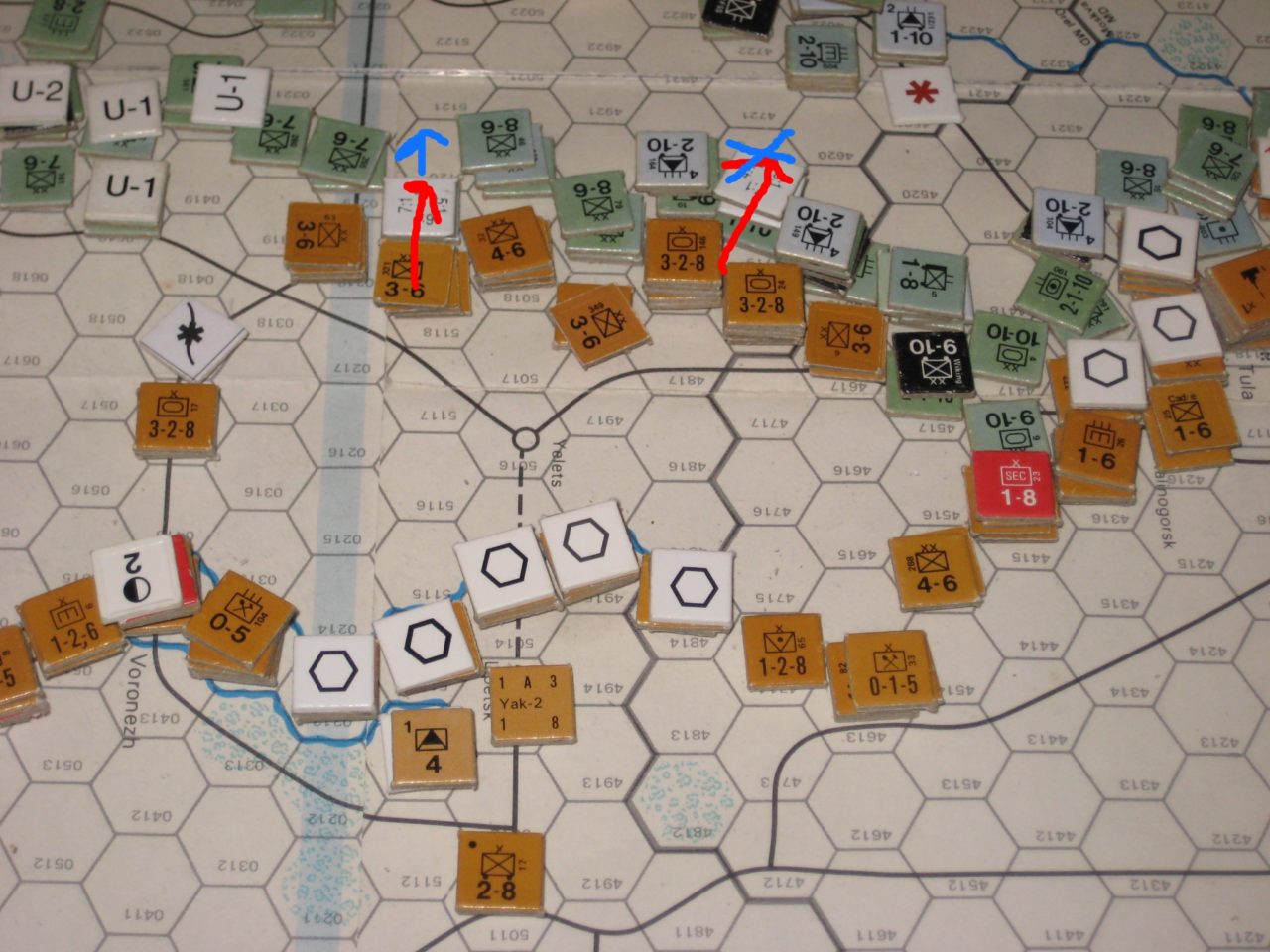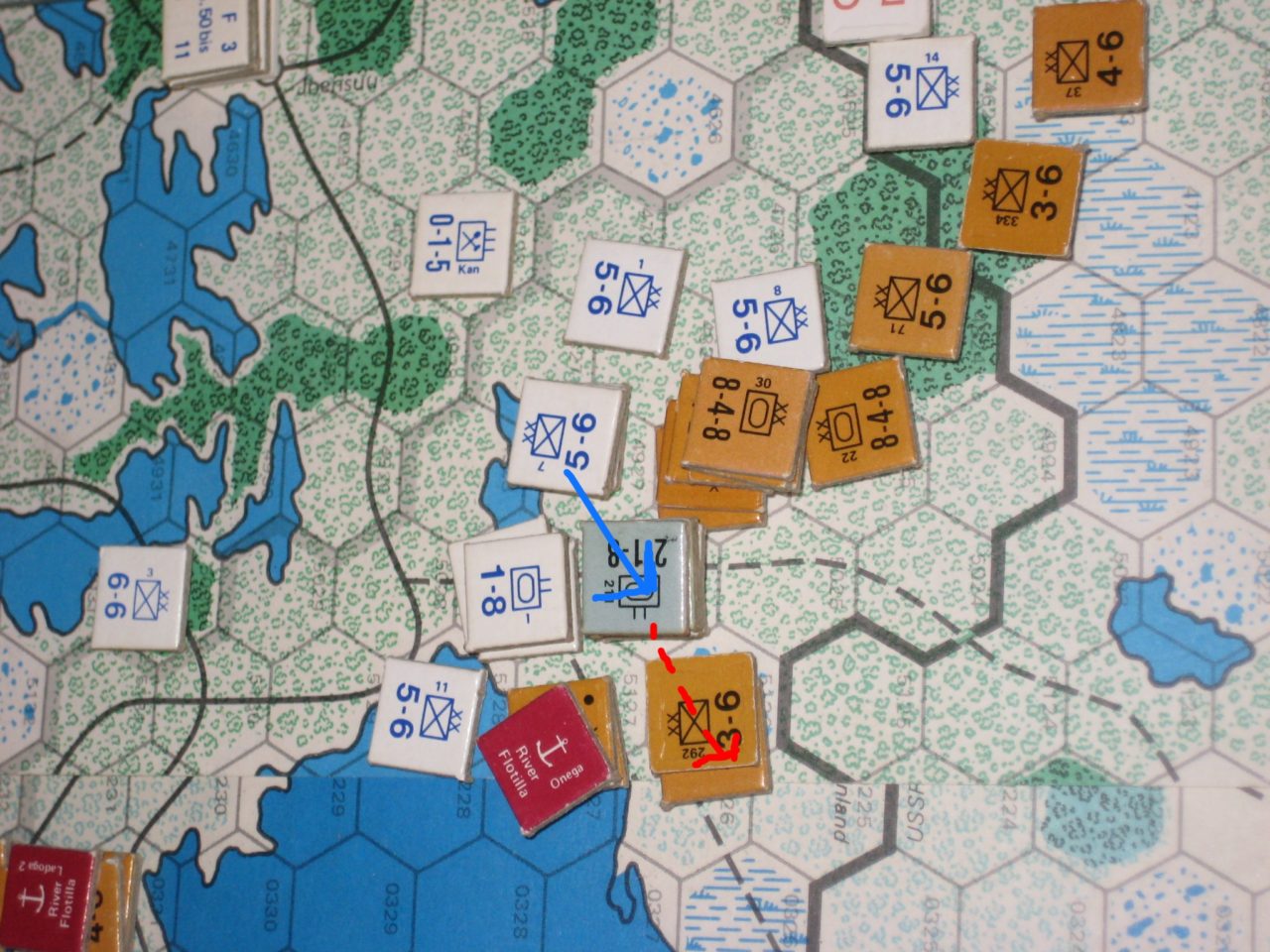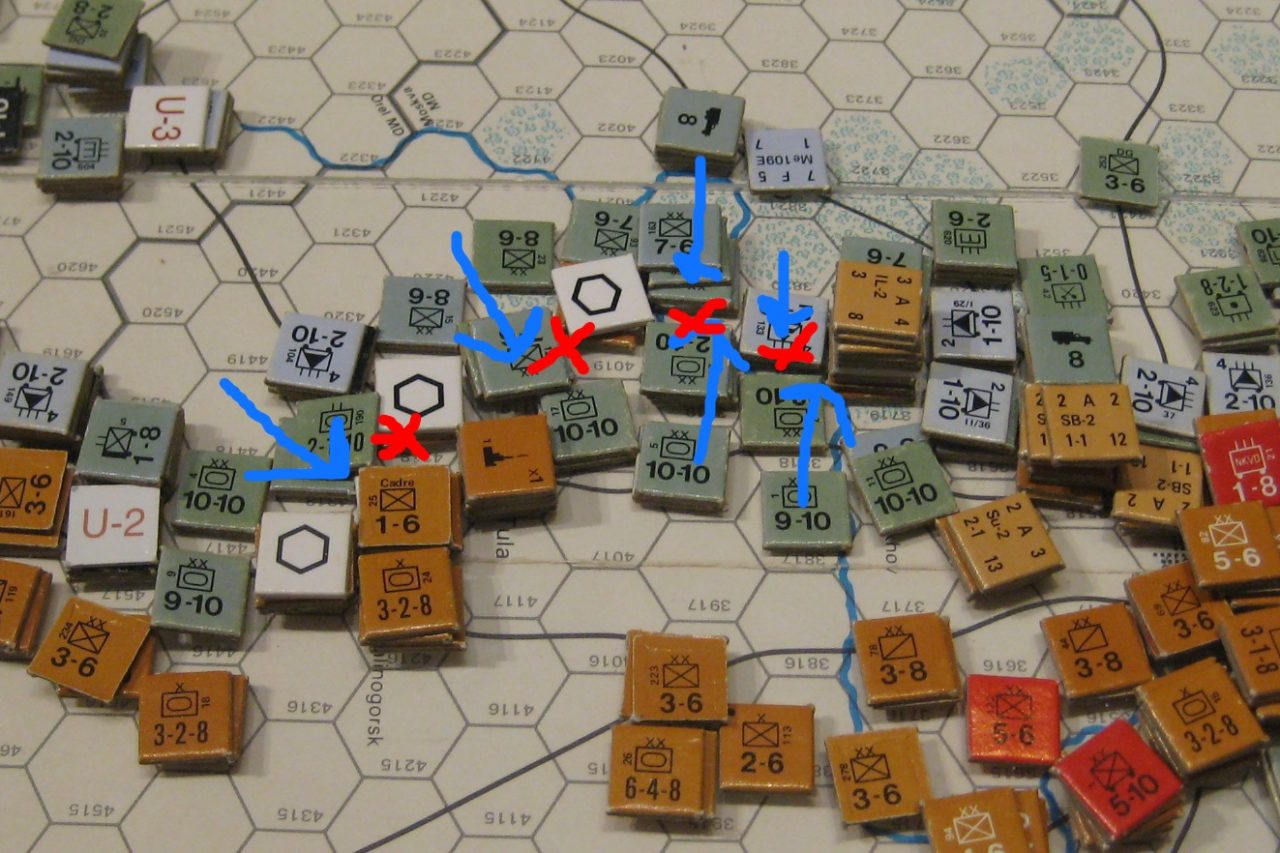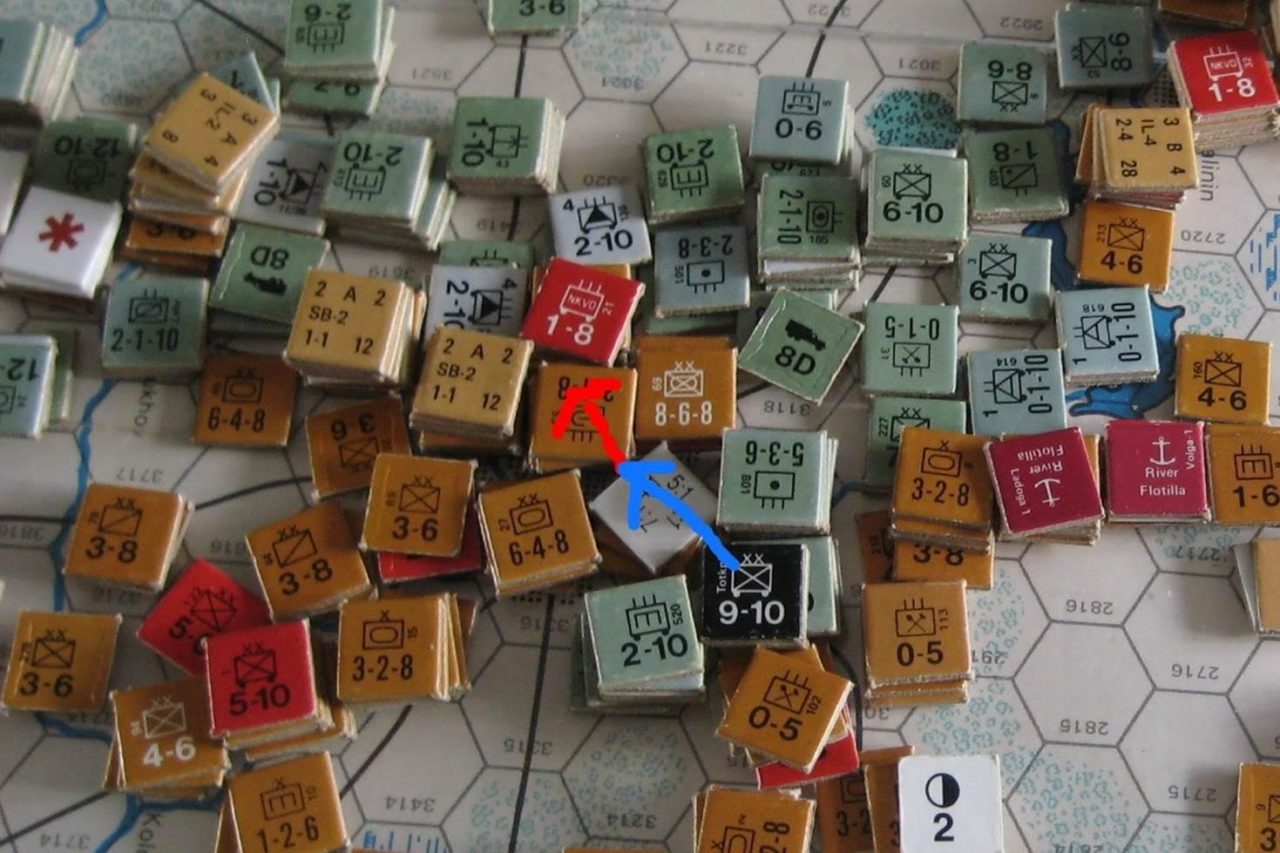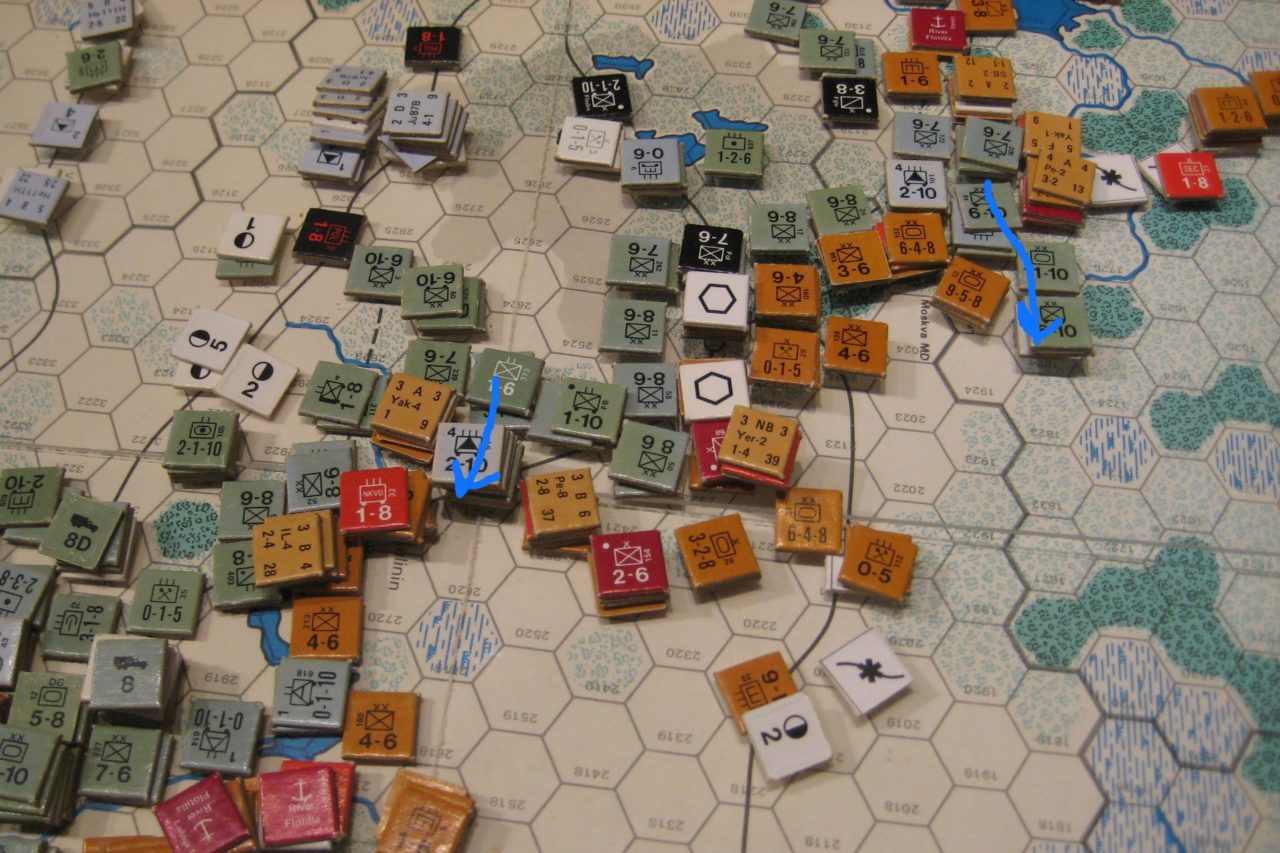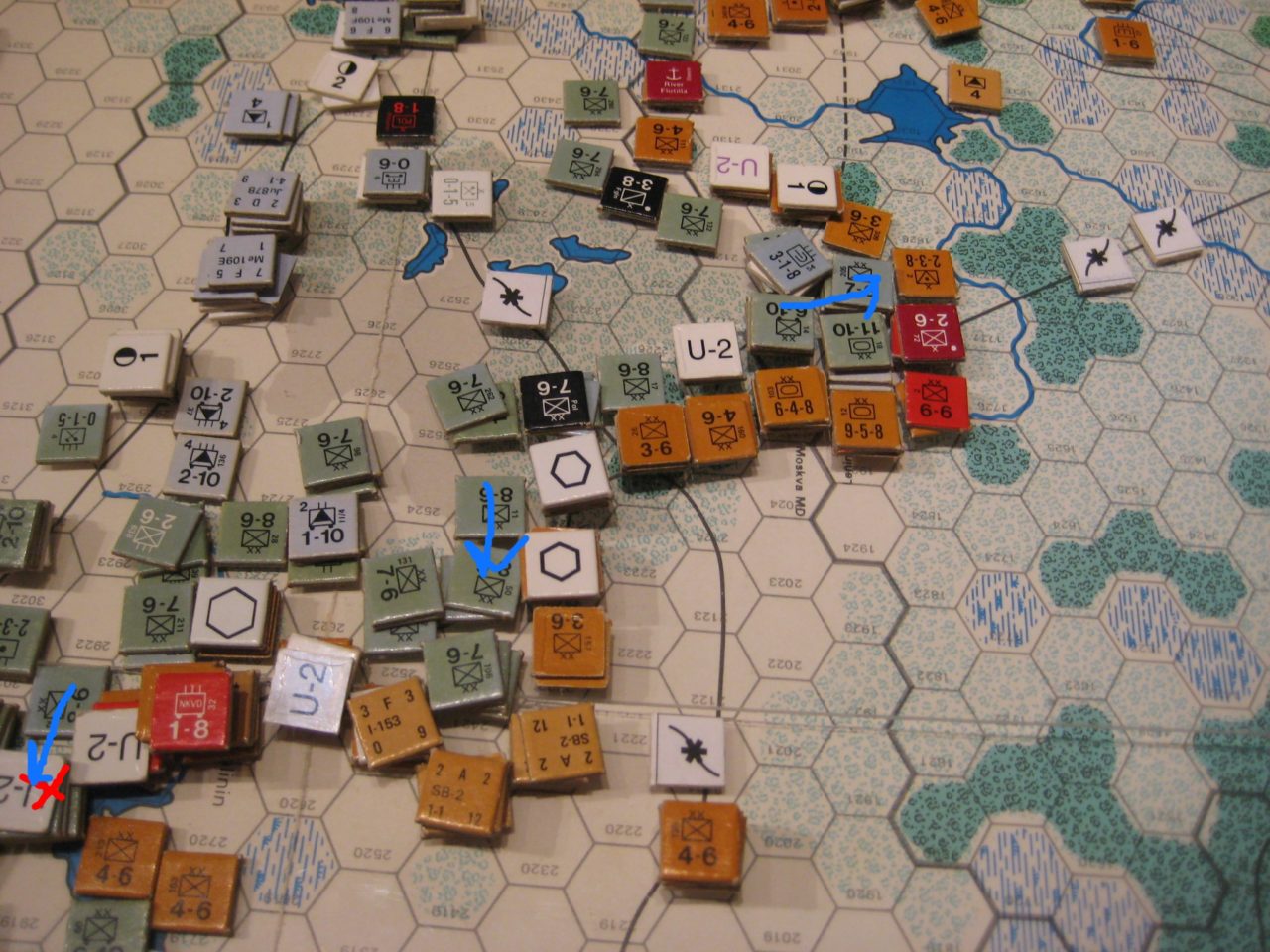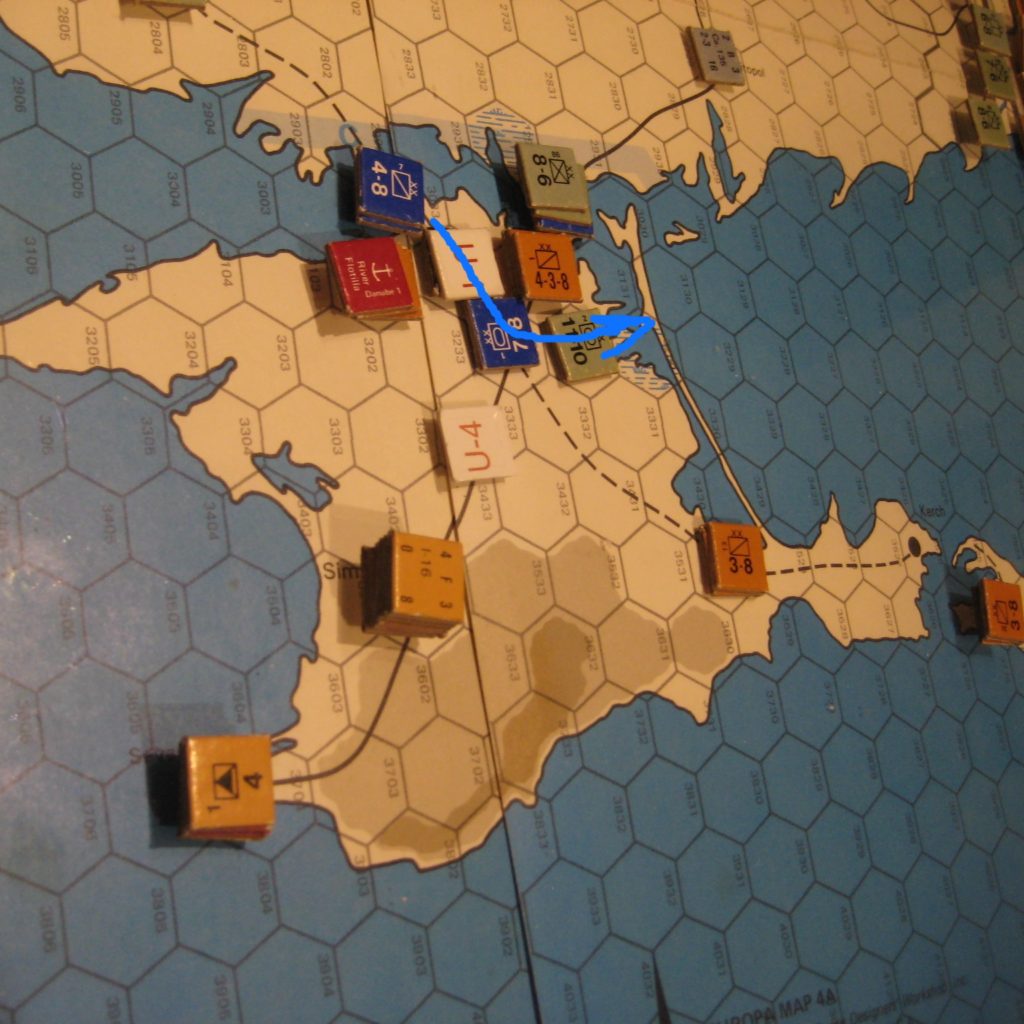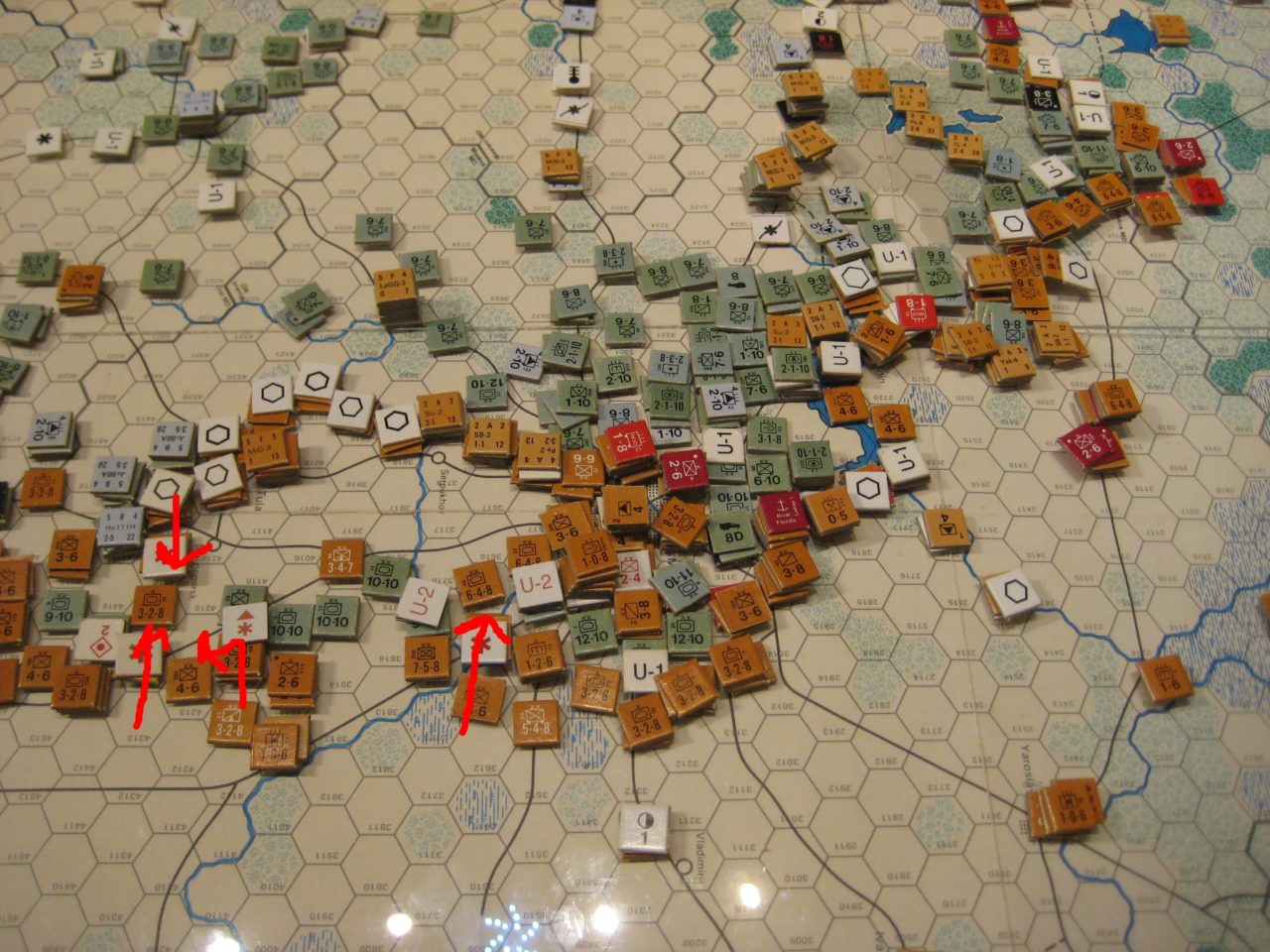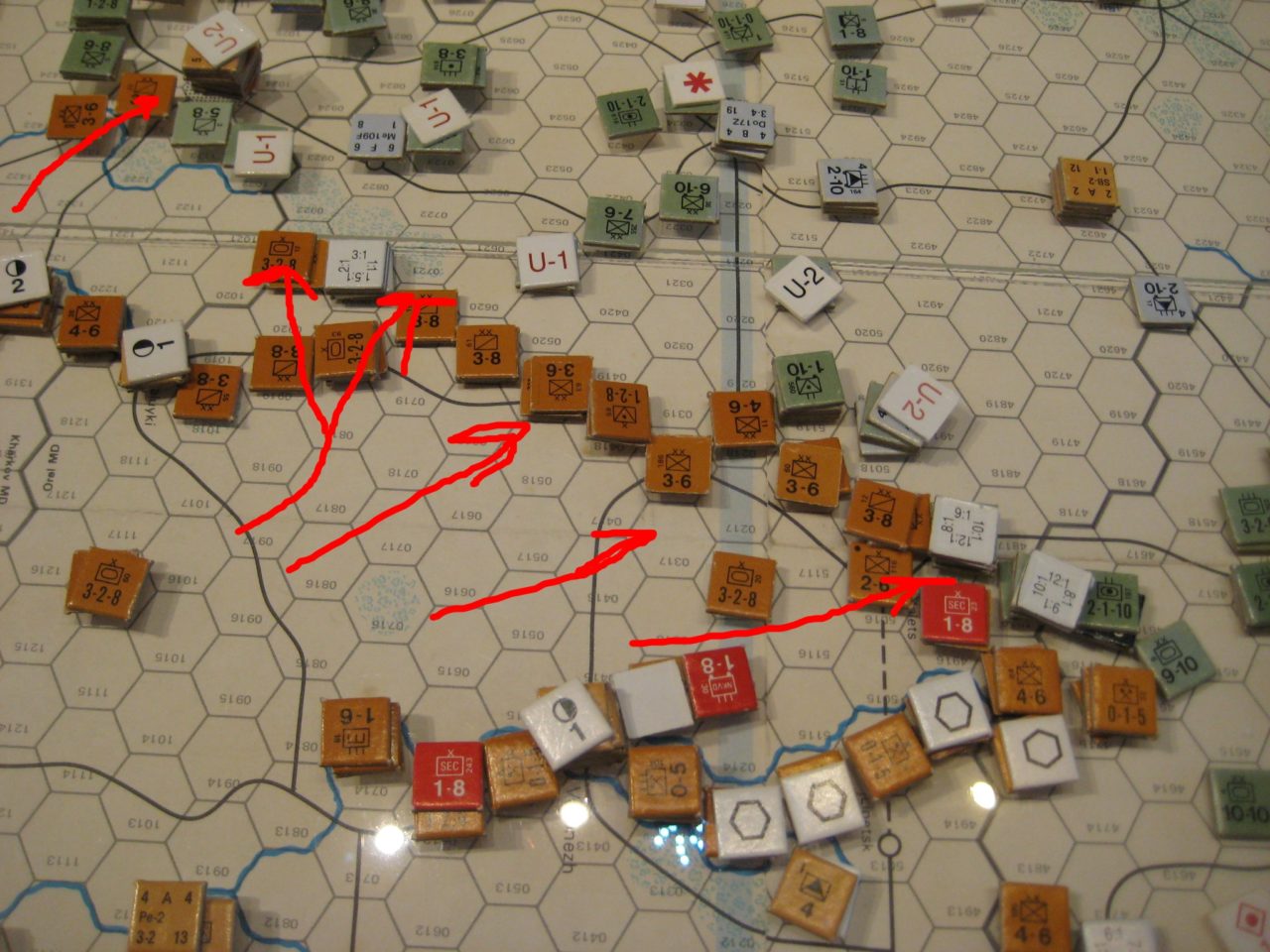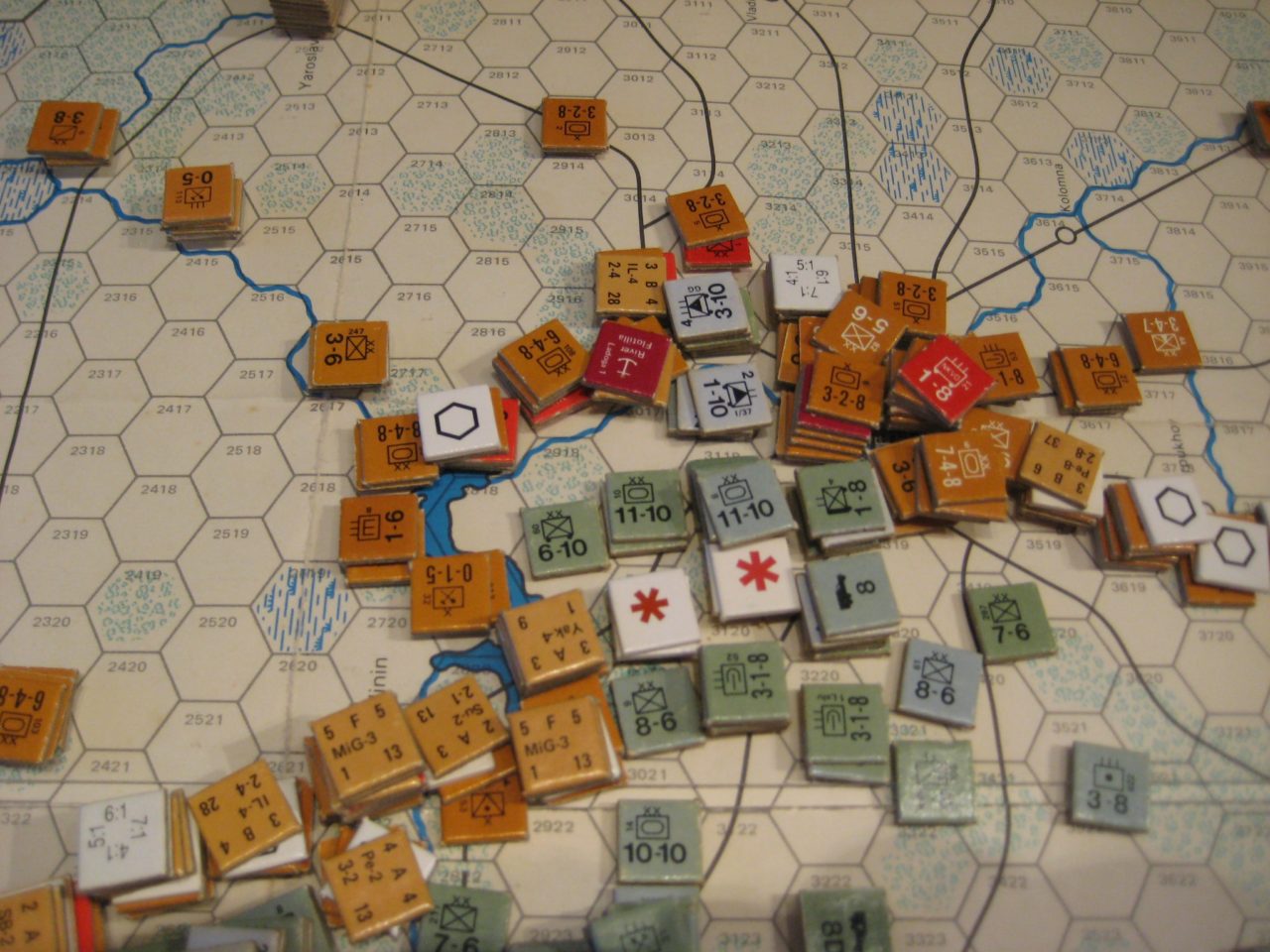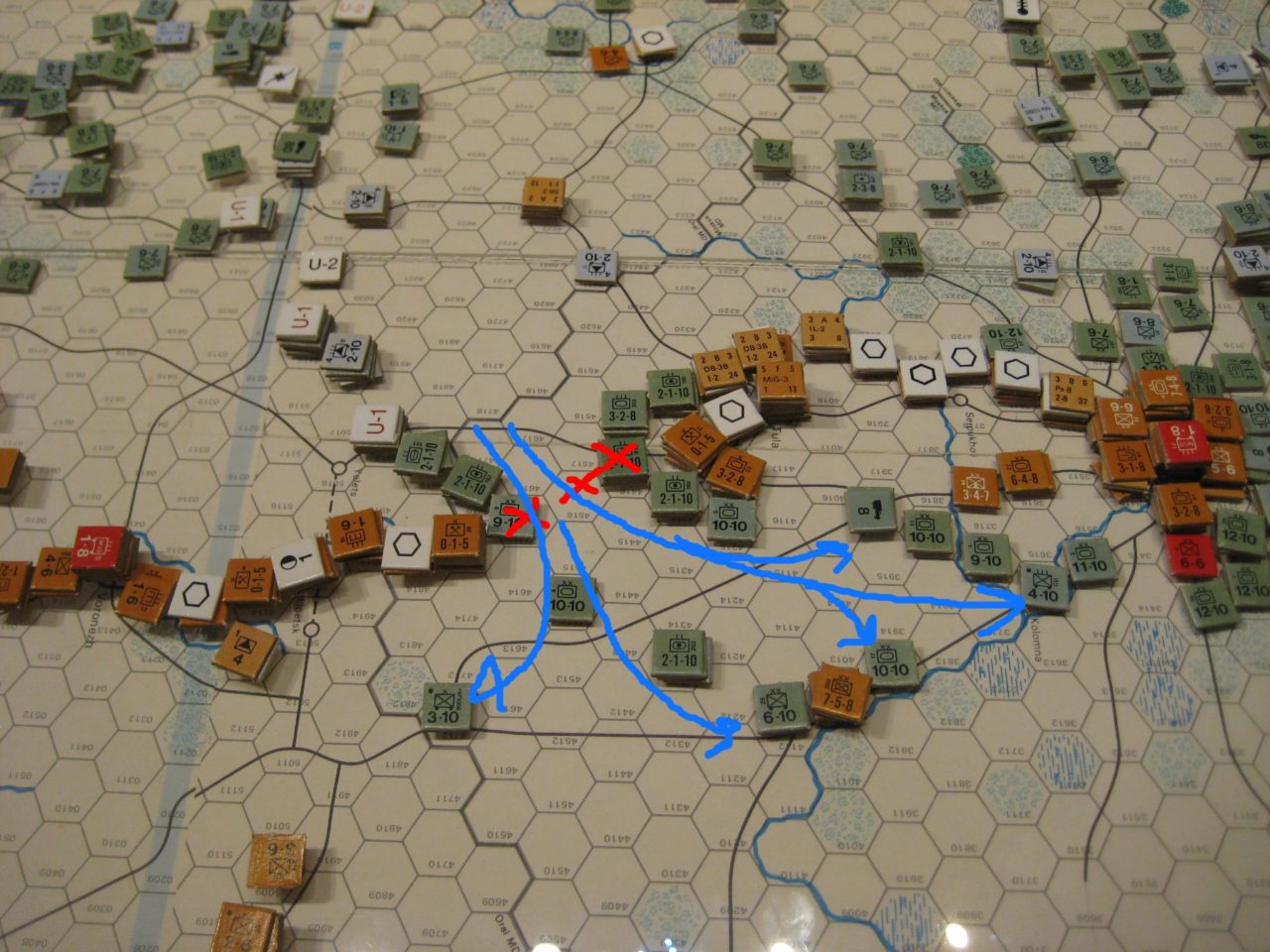Jan I 42
Malta status = 6
The Allies sit tight, but the Axis figures that they have air superiority on the front line (rough parity in good fighters, with Axis actually having slightly better aircraft, the Axis with many more and much better bombers and dive bombers, plus as many obsolete Italian fighters again). A sustained airfield bombing campaign is launched, with the dual purpose of forcing the inferior Hurricanes to duel with Me109s and MC202s and of bombing out the airfield capacity.
Also part of the Axis thinking is that Malta is muddy and bound to grow more powerful, but there are plenty of AS already ashore in N Africa, while more critical reinforcements and replacements may be turned back but only have a 1 in 6 chance of actually being sunk if the NT is hit by Malta Status anti shipping forces. So the Malta bombers and Italian anti shipping aircraft are also pulled off naval duties to join the assault. The initial results are inconclusive, but the Axis wears down the allied air forces over the next few turns.
Jan II 42
Malta status = 5. Attritional air warfare continues.
Feb I 42
Malta Status = 3. The first of the Australian withdrawals happens
Feb II 42
Malta Status = 2. 7th Armoured division is no more; down an armoured brigade, its SG also turns into a 2-10 Mot Inf and a HQ.
Note; while conversions are not compulsory, it feels too contrived to spend the game keeping the 7th Arm SG and a 1-8 AT II, or all 1-10 SG and the 3-8 Gds Inf X, etc apart to artificially postpone the conversions until convenient. So as a house style I try to complete conversions on schedule as afar as practicable.
The Axis decide its time to take a risk and attack the forward Allied stack of 37 points (1x Arm Xx, 2 x Inf XX Incl the NZ, 2 x 6-4-6 tk X, an AA X, and 2 x 3-8 Art X). They take care to avoid invoking ATEC for just a -1 from the Allied fort (who knew that a 2-6 Inf XX could be so handy?) . In huge air battles a lone SA DB-7B, unescorted, makes it through fighters and flak – DFCs all round. The Axis bomber armada lifts odds to 2-1 (just – a very close run thing) and the result is EX.
The Axis loose 5Le entirely (they already have the replacement points to rebuild it), 21Px and Ariete are cadred, an Italian 2-6 Inf XX, 2 x 3-4-X Art (one It, one German) and assorted ash and trash are lost.
A very bloody result all round, but the front is opened up..
Mar I 42
Malta status = 1
The Allies cannot fully rebuild their airforce (ARP restrictions) and they lose 2 more Inf XX to the Far East. So they re-jigg front line forces, bringing up 2 engineering X to quick construct a new fort in the hex the seaward XXX retreated to last turn. Cadred British Inf and Arm XX are pulled back, out of any ZOCs, for speedy rebuilding with accumulated replacement points.
DAK, despite last turn’s losses, sees an opportunity for an armoured attack on the now fortless front line attack; the Allies have some armour but the attack will still go in at +2. Again the application of maximum airpower lifts 27:20 to 2:1 odds. The result is DH and the Allied line has been decisively broken; the two turn run of risks taken has paid off. 1st SA Inf XX is eliminated entirely in its first engagement along with a Cons X that would have been doomed in the retreat anyway.
The airforces of both sides are badly damaged; the LW has 1 Ju88 k, and another 3 aborted, 1 x Ju87D a, 1 x Ju87B k, 1 x Me109F3 k, 1 x Me110D a, the Italians have an SM 79-2 k, another aborted, along with a BR20M and a CR42AS. There are a killed Hurri 2C and Blen 4, plus aborted Well2, A22 x 2, P40E (aborted by a Ju88 on its first mission !), a P40C, and the DB7B.
Mar II 42
It is time for the great Allied runaway (again). It is also the turn, ironically, when the railway reaches Tobruch. The cadred Inf and Arm XX are rebuilt and airfield construction turned to airfield destruction before everyone heads east.
The biggest Allied XXX is partially trapped 16 miles inland. The Indian Division retreats north east to ZOC in the road; DAK can get past it but the Italians can’t, greatly increasing the chances of a successful withdrawal.. The 2nd SA Inf XX, the NZ cadre, and all the surviving artillery (the original W brigade has never entered the replacement pool for removal!) take a different path, risking a terrible fate as they try to escape SE around the Sebchet el Gheneien saltmarshes. They do at least have a couple of AS with them, so they will remain supplied for a month.
1st and 2nd Arm XX screen south of Msus. At the start of the Axis turn the RAF lays down maximum harrisment south of Agedabia – the first harrisment missions of the desert war – protecting both the armoured divisions and the 2nd SA XX.
The Axis start their turn by rebuilding 21Pz. The Allies may have miscalculated…
Final Remarks
I’m afraid I stopped keeping detailed records of my game because I needed to clear the room by this weekend. The switch to using the Malta repair rate in the OB but requiring 2 hits be Malta Table column shift worked well, and the Malta number in the game was then broadly comparable to that recorded as historical in the Torch scenario instructions. There were some exciting swirling battles on the Tunisian border, with DAK being nearly surrounded, breaking out and in turn ZOC killing a British armoured XXX in the process, then a slow fighting retreat past the various bottlenecks. Meantime Torch benefited from the best weather I’ve ever seen – I kept rolling 1s – so instead of the usual advance stymied by mud the Allies advanced east at a good clip up to the Tunisian border. Here, however, there were just enough Axis forces to block the advance until airfield building finally allowed the Allies to gain air superiority then supremacy over the battlefield.
Bizerte was bombed out and Tunis’ port badly damaged (I love having the actual B17 counters to play with in this game!). At that point, in Jan II, the weather was again clear, allied reinforcements were starting to tell, and the Axis didn’t just have enough forces to hold an extended perimeter any more. DAK had to fall back from its strong blocking position or be cut off from the rear. A much smaller but more solid perimeter around Tunis/Bizerte was established.After a couple more turns, and as the US began to assemble divisions, the LW and RA largely gave up the fight only leaving a few fighters behind.
The Axis started evacuating rather than reinforcing. The cadre of 21st Pz, Trento (as an unmotorised 5-8 Inf XX), a 4-3-6* Italian Arm X, and the LW parachute units were the principle units saved by the end.The Allies steadily ate away at the perimeter forces, aided by generous replacement rates, while the Allied airforces continued to bomb the hell out of Tunis’ port turn after turn despite the 13 AA points there. Which is where my house rule (or maybe RAW) query comes in. In one interpretation, as long as there is a Supply Terminal in Axis hands, there is no surrender. So even if the Supply Terminal is in a port that’s totally bombed out, and so all the units are unsupplied, no surrender.
This interpretation, which I think is RAW, leads to an Axis strategy of maxing out the defence of Tunis (something like 40 def, 10 – 13 AA is quite possible) with enough AS to convert to general supply to last for months, and abandoning or evacuating everything else. The Allies will struggle to get a 2:1 -1 attack on such a strong stack entrenched in a city, leading to turn after turn of repetitive battering and perhaps even a drawn out stalemate . Such a long siege in a Tunis with no functional port seems very unlikely to me, and certainly not how the historical campaign ended.The other interpretation of RAW – or maybe just my house rule – is to require a supply terminal to be functioning to count. So the Axis surrender when they lose their last supply terminal or that last supply terminal is in a non-functioning port at the start of their (or the Allies – can’t remember when surrender is determined just now) initial phase. Regardless of how much AS they have stashed. That’s how my game ended, at the end of March 43, with no port cap left but two It Armoured XX plus 15Pz still in the field and Tunis still occupied.
Commentary and Questions
If we follow RAW, does a supply terminal have to be in a functioning port to count? And if RAW pays no attention to whether the port is working or not, then any thoughts on my house rule as an alternative surrender condition? It was a great game with many twists and turns – I particularly like the way that the Italians finally get to field a 3 XX armoured XXX worth the name – and I feel that the way I ended it avoided a boring and ahistorical slugfest hammering a fortress Tunis turn after turn. But you may think different! Ps I thought about carrying over into SF but it seems that the historical limiting factor on timing was the availability of landing craft, so with no possibility of an early Husky and a slightly stronger Axis force, with more saved replacements in place, to oppose the landings I didn’t bother.

